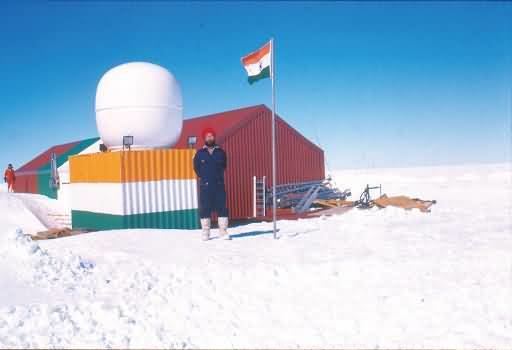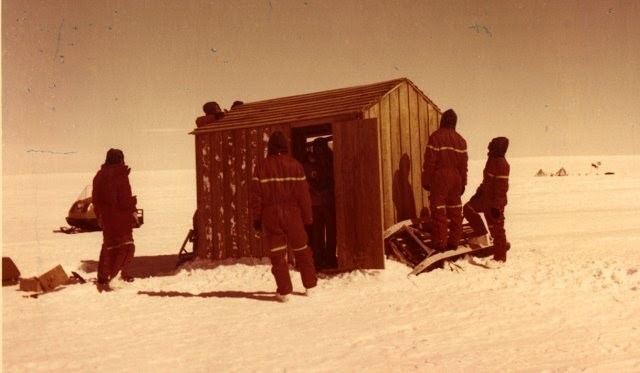 | ||
Dakshin Gangotri was the first scientific base station of India situated in Antarctica, part of the Indian Antarctic Program. It is located at a distance of 2,500 kilometres (1,600 mi) from the South Pole. It is currently being used as a supply base and transit camp. The Dakshin Gangotri Glacier is named after the base.
Contents
- Dakshin Gangotri India on Antarctica Scientific Base Station on South Pole Aashu Dev
- Description
- Conversion to supply base and replacement
- References

It was established during the third Indian expedition to Antarctica in 1983–84. This was the first time an Indian team spent a winter in Antarctica to carry out scientific works. The station was built in eight weeks by an 81-member team. Construction was completed late into January 1984 with help from the Indian army and Indian Republic Day was celebrated at the station along with the Soviets and East Germans.

Dakshin Gangotri | India on Antarctica | Scientific Base Station on South Pole | Aashu Dev
Description
It was an unmanned station, set up using indigenous Indian equipment, powered by Solar energy. The station was entirely computerised to record all data that was researched. It was built using pre-fabricated timber, and was intended as a permanent station. It had an Inmarsat communication terminal, as well as an amateur radio station.

The station was divided into two sections, Blocks A and B. Block A contained generators, fuel supply and workshops while Block B was home to laboratories, radio rooms and other facilities.

An automatic weather recording station, powered by solar energy was set up at the Dakshin Gangotri. Apart from this, the station was used to conduct tests on radio waves in Antarctica. Other functions of the Dakshin Gangotri included observations of physical oceanography, the chemistry of the freshwater lakes around, biological traits of the land, biological traits of the water, geology, glaciology and geomagnetism of the area.

In 1984, site for a new runway was identified at a distance of 2 km from the station. Along with this, 2000 philatelic covers were marked with Dakshin Gangotri. Later, in the same year, a small field station was set up in the hills, to allow direct communication over a high frequency satellite link between Indian mainland and the station.
In 1985, instruments such as the Automatic Picture Transmission Receiver, and the Radio Meter Sonde were set up to calculate wind velocities and solar intensities to determine the feasibility of generation of wind energy and solar energy. 2000 philatelic covers were cancelled, while videos were taken on the station. An electrified garage to store snow vehicles and skidoos was constructed as well as a repair workshop for them was constructed along with three cottages made with pre-fabricated material, built by the Defence Research and Development Organisation.The Indian Navy helped set up the communications system for wireless transmission to India.
Conversion to supply base and replacement
It was abandoned in 1988-1989 after it was submerged in ice. It was succeeded by the Maitri, which was set up in a moderate climatic zone at a distance of 90 km and made operational in 1990. Dakshin Gangotri was finally decommissioned on 25 February 1990 and subsequently turned into a supply base.
In 1991, the eleventh Indian Scientific Expedition to Antarctica conducted geomagnetic observations simultaneously at Dakshin Gangotri, Maitri, and Payer using sensors.
In 2008, India set up its first permanent research base on the Arctic Ocean, Himadri.
In 2012, a third research station, the Bharati was made operational, although only for testing.
